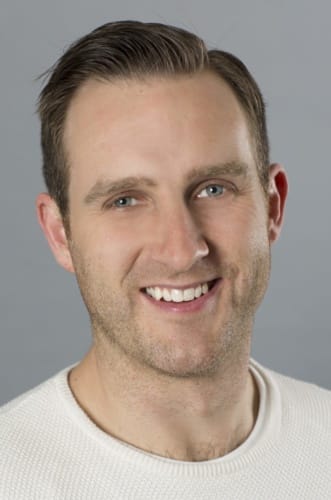https://vimeo.com/229613696
Involving the next generation to build for the future
 Stephen Baxter serves as the Senior Product Manager for Microsoft’s Windows 10 S. He is an Australian import, and I recently had the opportunity to catch up with him at the 2017 Microsoft Imagine Cup World Finals in Seattle. Newly introduced amid much fanfare, Windows 10 S is streamlined for security and performance and seems to be a natural fit for the education market.
Stephen Baxter serves as the Senior Product Manager for Microsoft’s Windows 10 S. He is an Australian import, and I recently had the opportunity to catch up with him at the 2017 Microsoft Imagine Cup World Finals in Seattle. Newly introduced amid much fanfare, Windows 10 S is streamlined for security and performance and seems to be a natural fit for the education market.
User feedback from students is essential, and Stephen sees a benefit to involving young children in technology at the earliest opportunity. He sees a system that’s perfect for education but easier for teachers and schools to manage, in an environment that gives students the freedom to create and be themselves. Whether it’s working individually or in groups, students can experiment, learn and grow much like the teams at the Imagine Cup competition.
Stephen wants both student teams and industry developers to make a positive impact and think about where they can take application development into the future. He challenges students to not only create the next popular hot game or app but examine how they can better the future in varying ways through technology.
Interview Transcript
Dr. Berger: Stephen, it’s nice to be spending some time with you today. Tell me about Windows 10 S. What should we in the market know and, from your perspective, what’s the most exciting component about the way in which we can all be interfacing with it?
STEPHEN BAXTER: The tagline “Windows 10 S” helps speak for it. It’s streamlined for security and performance. It’s for those customers who are concerned about security and performance. All of your applications are verified by Microsoft which helps keep the product at its peak performance from Day 1 to Day 100.
It’s also available on a wide range of devices including the Surface Laptop. It’s a full version of Windows; you get all the great features like Windows Hello, Windows Ink, Cortana, etc. But the key thing is being able to maintain that performance and also hold up security.
DB: Take us behind the scenes a little bit when we’re talking about security. I think there’s a lot when the public thinks about security in the technological world that we live in; yet, I’m sure that there are realities when we’re developing technology that is protected.
What is it like going behind the scenes of the amount of work that has to go in to make sure the performance isn’t compromised by the security measures that we’re putting in?
SB: There’s a lot that goes into building a product like Windows 10 S. But I think the key fundamental is that all of the applications are verified by Microsoft before they go into the Windows store, and then customers download all of their applications from that store. They know that they’re safe and secure. They’re not going to install any unwanted code in their device. More importantly, they’re not going to install anything like malware if the application comes from the Windows store.
DB: How much in the development side of things do you get from the market in hearing about what they want in functionality in what might be the next 10 S?
SB: We take a lot of data from Windows Insiders and really take their feedback on board when developing Windows 10 as a whole. We use a lot of that feedback to drive where the product goes with new features.
DB: Let’s take the conversation to education, when we think of a big picture about what technology can provide us. We’re in a world now where we have digital natives and these children are growing up experiencing the latest in technology, and that this is all they know. What do you think the impact is on the development world in technology to take in that information, the user experience, the UI, and the UX into what we will all be experiencing in the next five to ten years?
SB: I think the most important piece is being able to get these younger children involved in technology as early as possible. And, I guess, that’s also key for Windows 10. It’s being able to create an environment that’s perfect for education, one that’s easier for teachers and schools to manage but also one that gives students the freedom to be able to create and to be themselves.
DB: Earlier today, Satya Nadella, the CEO of Microsoft, was challenging developers to bend the curve. What does that mean to you? I thought it was a very compelling statement on the power that we all have in front of us to be able to innovate and create not only as individuals but as teams across the world.
SB: I think it’s really about getting developers to not just build the next hot game or the next hot application but to really think about where we can take application development in the future so we can better the world in some different way as well as being able to create the next hot game that everyone wants to play.
DB: Let’s talk about your personal background. Tell me about education back in Australia and what life would have been like growing up in a Windows 10 S environment.
SB: I think things would have been a lot easier to work with Windows 10. When I first started with computers, it was a two-toned color screen with four cabled imports and it barely had a mouse.
If we had Windows 10 back in those days, I think we’d be a lot further than what we are now.
About Stephen Baxter
 Stephen Baxter is a senior product manager on the Windows Consumer Marketing team, supporting Windows 10 S and Windows on Snapdragon. He has worked for Microsoft/Nokia for the last 7 years; prior to moving to the US, Stephen lived in Sydney, Australia as a Lumia Product Manager. Before joining Microsoft, he worked for Vodafone Hutchison Australia in the Device Marketing team for over 7 years, focusing on Device Customization and Go To Market.
Stephen Baxter is a senior product manager on the Windows Consumer Marketing team, supporting Windows 10 S and Windows on Snapdragon. He has worked for Microsoft/Nokia for the last 7 years; prior to moving to the US, Stephen lived in Sydney, Australia as a Lumia Product Manager. Before joining Microsoft, he worked for Vodafone Hutchison Australia in the Device Marketing team for over 7 years, focusing on Device Customization and Go To Market.
This article was first published in the Huffington Post
Author
Dr. Berger of MindRocket Media Group is an education correspondent and personality with articles in The Huffington Post, Scholastic, and Forbes.
Twitter.
- Forbes – Windows 10 Mobile And Microsoft’s Smartphone Ambitions Have Not Died
- The Daily Independent – Prince awarded for service in education technology
- CNBC – Bill Gates: Better technology must be developed to educate people


